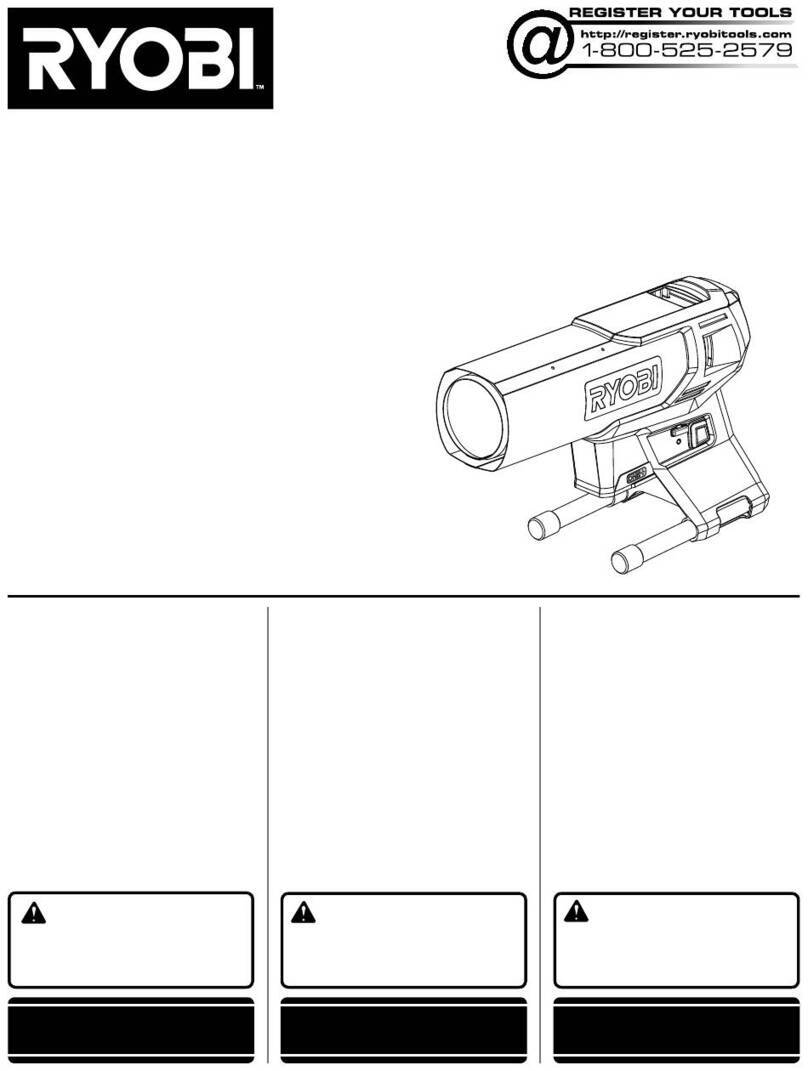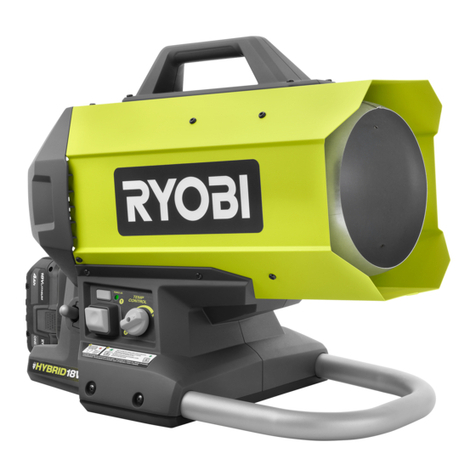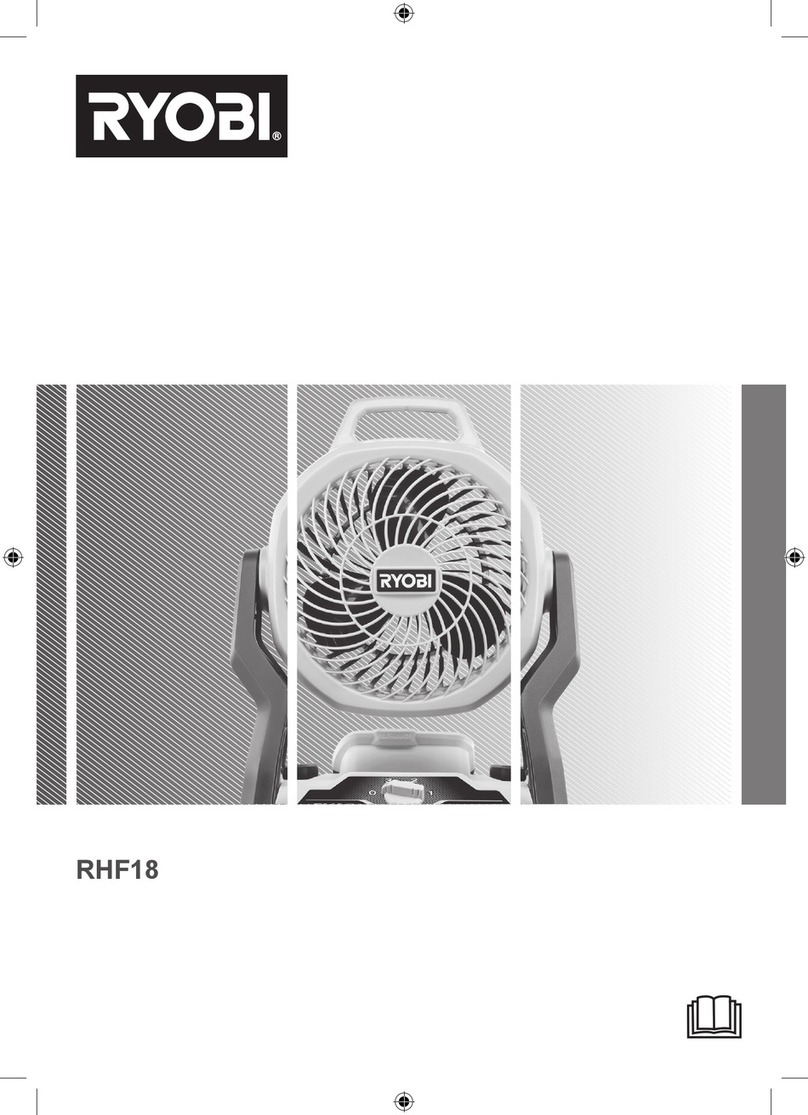
IMPORTANT!
This product is not intended for use by persons (including
children) with reduced physical, sensory or mental
capabilities, or lack of experience and knowledge, unless
they have been given supervision or instruction concerning
use of the product by a person responsible for their safety.
Children should be supervised to ensure that they do not
play with the product.
It is essential that you read the instructions in this manual
before assembling, operating, and maintaining the product.
Subject to technical modications.
Safety, performance, and dependability have been given
top priority in the design of your misting fan.
INTENDED USE
The misting fan is intended to be used only by adults who
have read and understood the instructions and warnings in
this manual, and can be considered responsible for their
actions.
Use the product for the purposes listed below:
■Outdoor cooling and misting connected to garden hose
or sitting on a water bucket.
■Indoor cooling not connected to source of water.
Do not use the product in any way other than those stated
for intended use.
MISTING FAN SAFETY WARNINGS
■Be aware that high humidity levels may encourage the
growth of biological organisms in the environment.
■Do not permit the area around the product to become
damp or wet. If dampness occurs, turn down the mist
output. If the output volume cannot be turned down,
use the product intermittently. Do not allow absorbent
materials, such as carpeting, curtains, drapes, or
tablecloths, to become damp.
■Never leave water in the water bucket when the product
is not in use.
■Empty the water bucket and clean the product before
storage. Clean the product before next use.
■Never direct mist or water toward any electrical wiring
or devices.
■Ensure that all hoses and accessories are properly
connected before using the product.
■When connecting to water mains through a garden
hose, the hose must be constructed to prevent back
siphonage of non-potable water into water means,
complying with IEC 61770.
■Only use clean, cold water.
■Do not use this misting fan to spray pesticides, liquid
fertilizers, chemicals, or any liquids other than clean
water. Spraying these substances could result in serious
injury or illness to the operator or bystanders.
■Make sure hose and mist tube are located so that they
will not be stepped on, tripped over, come in contact with
sharp edges or moving parts or otherwise subjected to
damage or stress. This will reduce the risk of accidental
falls, which could cause injury, and damage to the hose
and mist tube which could prevent the product from
working properly.
■Use caution when positioning the product for use. Never
place the unit near electrical outlets or switches.
■Check hoses and parts for signs of damage. Replace
any damaged hoses or parts.
■Use caution when using in windy conditions. Winds may
carry mists into electrical wiring or devices.
■Do not use the product on or near surfaces that can be
damaged by moisture.
■Do not kink or overbend the hose or mist tube.
■Be careful not to spill water when filling water bucket.
Ensure all hose connections are secure before using
misting fan. Spilled water and leaks can result in a
slippery surface and create a slip and fall hazard.
■To reduce the risk of personal injury and electric shock,
the portable fan should not be played with or placed
where small children can reach it.
■Ensure battery compartment cover is completely closed
to prevent water from contacting battery or entering
battery port.
■Battery tools do not have to be plugged into an electrical
outlet; therefore, they are always in operating condition.
Be aware of possible hazards when not using your
battery tool or when changing accessories. Following
this rule will reduce the risk of electric shock, fire, or
serious personal injury.
■Do not place battery tools or their batteries near fire or
heat. Following this rule will reduce the risk of explosion
and possibly injury.
■Never use a battery that has been dropped or received
a sharp blow. A damaged battery is subject to explosion.
Properly dispose of a dropped or damaged battery
immediately.
■Rechargeable batteries to be removed from the product
before being charged.
■Exhausted batteries are to be removed from the product
and safely disposed of.
■Do not use non-rechargeable batteries in place of
rechargeable batteries.
■Do not use modified or damaged batteries.
■Be aware of the risk of terminals of the battery-operated
appliance or battery being short-circuited by metal
objects.
■If the product is to be stored unused for a long period,
the batteries should be removed.
■The supply terminals are not to be short-circuited.
■Ensure that the product is switched off from the supply
mains before removing the guard.
ADDITIONAL BATTERY SAFETY WARNINGS
■To reduce the risk of fire, personal injury, and product
damage due to a short circuit, never immerse your
battery pack or charger in fluid or allow a fluid to flow
inside them. Corrosive or conductive fluids, such as
seawater, certain industrial chemicals, and bleach or
bleach-containing products, etc., can cause a short
circuit.
■When battery is not in use, keep it away from other metal
objects such as paper clips, coins, keys, nails, screws or
other small metal objects that can make a connection
from one terminal to another. Shorting the battery
terminals together may cause sparks, burns or fire.
■Do not expose a battery pack or tool to fire or excessive
2































